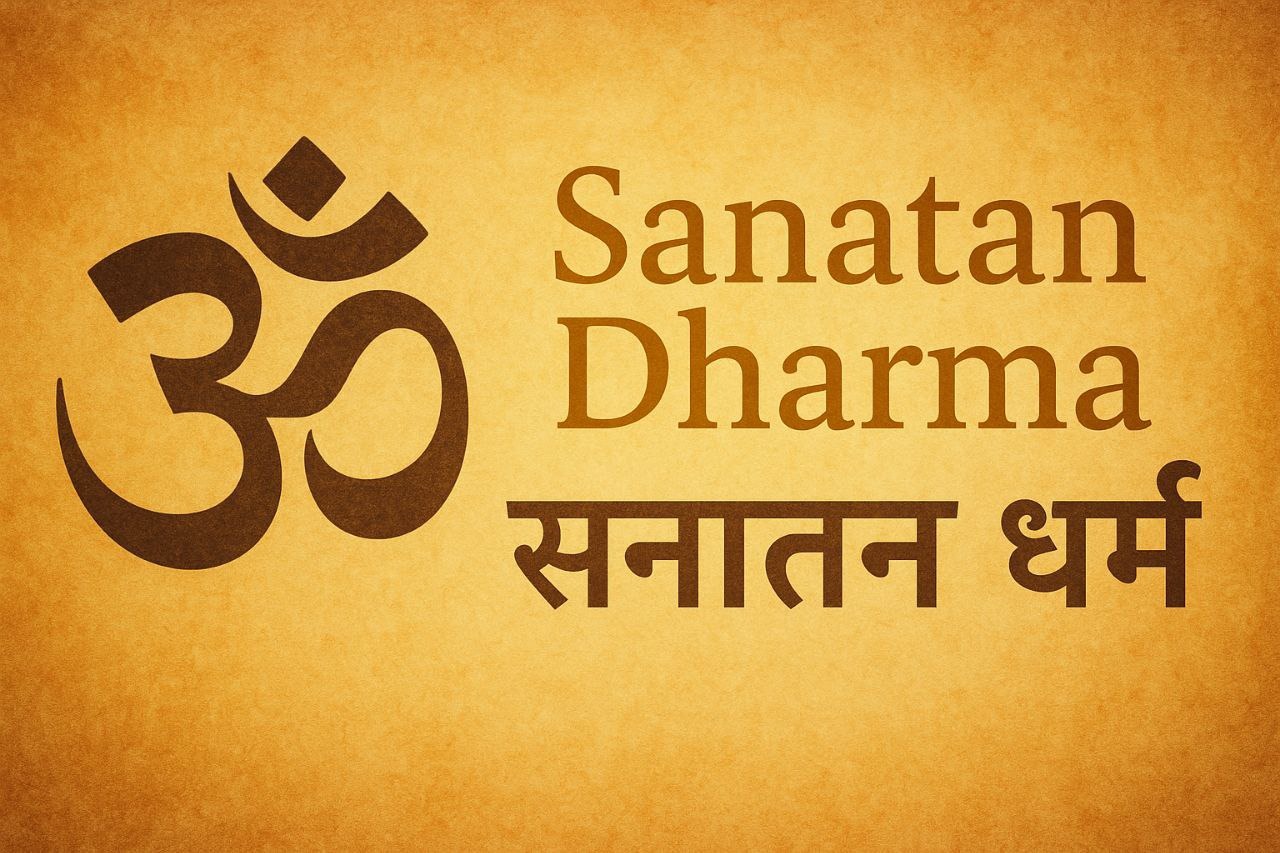Śrīmad Bhāgavatam ~ The Stream of Bhakti in Sanatan Dharma

In the vast ocean of Sanatan Dharma, if the Vedas are considered the philosophical foundation and the Upaniṣads the subtle metaphysical peak, then the Śrīmad Bhāgavatam is the fragrant flower of divine love, Bhakti. It is a scripture where wisdom and devotion melt into each other, pouring like a continuous stream of nectar (amṛta) for the soul.
The Śrīmad Bhāgavatam, also known as the Bhāgavata Purāṇa, is not merely a scripture; it is a transcendental drama of divine love and realization. It sings of Bhagavān Kṛṣṇa not only as the Supreme Being but as the very embodiment of rasa, bliss, love, and beauty.
The Heart of Bhakti
Śrīmad Bhāgavatam is the definitive text for Bhakti Yoga. It doesn't just advocate love for God, it embodies it. The lives of saints like Prahlāda, Dhruva, Ambarīṣa, and especially the Gopīs of Vṛndāvana, illustrate a love that transcends reason and ritual.
“When the intellect kneels and emotion rises with surrender, Bhakti is born, not in the temple outside but in the sanctum within.” ~ Adarsh Singh
Bhakti here is not a means to liberation. It is liberation. The Gopīs never asked for mokṣa. Their only desire was to love Kṛṣṇa endlessly, a love that did not demand union, only the joy of devotion.
Stories as Mirrors
The Bhāgavatam uses profound narratives to reflect divine truths:
Prahlāda’s unshakable devotion in the face of persecution.
Dhruva’s tapasya, not for liberation but initially driven by ego, eventually transforms into surrender.
Ajamila’s redemption just by calling out “Nārāyaṇa,” unknowingly.
These stories are not myths, they are metaphysical allegories cloaked in historical imagination. They illuminate how Bhakti can dissolve karma, ego, and duality.
“Devotion is not an act of doing. It is the art of being in resonance with the Divine.” ~ Adarsh Singh
Kṛṣṇa: The Supreme Enchanter
The Bhāgavatam paints Kṛṣṇa not just as God but as Madan-Mohan, He who enchants even the God of love. His flute doesn’t just summon cows; it calls wandering souls back home. His Lilas are not performances; they are doorways into transcendence.
Even His apparent mischief, stealing butter or hiding clothes, has layers of spiritual symbolism. In Kṛṣṇa, God becomes intimate, personal, playful, and yet incomprehensibly vast.
Śravaṇam, Kīrtanam, Smaraṇam
The nine limbs of Bhakti (Navadha Bhakti) find their fullest expression here:
1. Listening (Śravaṇam) ~ Sūta’s narration to the sages at Naimiṣāraṇya.
2. Chanting (Kīrtanam) ~ Bhakti as a musical, joyful expression.
3. Remembrance (Smaraṇam) ~ Absorbing the mind in Kṛṣṇa’s Lilas.
“When one hears with the heart, the Divine enters not through the ears, but through the soul.” ~ Adarsh Singh
Philosophical Depth and Emotional Beauty
Unlike some philosophical texts that may distance one from emotion, the Bhāgavatam harmonizes Jnana (wisdom) and Bhakti (devotion). It presents Kṛṣṇa as Parabrahman and yet accessible to the milkmaid, the child, the old man.
It dissolves the dichotomy of the head and heart. The 10th Canto, Kṛṣṇa-Lila, is the soul of the Bhāgavatam, while the earlier cantos build the philosophical and cosmological base. Together, they offer not only a vision of the cosmos but a map of the heart.
Śrīmad Bhāgavatam in Modern Life
In an age of anxiety and fragmentation, the Bhāgavatam brings us back to the center. It teaches that Bhakti is not only for saints or sages but for anyone who longs for love that is eternal, selfless, and sacred.
Just as Kṛṣṇa entered the hearts of the Gopīs, He can enter ours, if we open the door with faith and surrender.
“Where the intellect ends, Bhāgavatam begins, where reason fails, devotion rises.” ~ Adarsh Singh
Śrīmad Bhāgavatam is not a book to be read, it is a heart to be lived. It urges us not to analyze the Divine but to adore the Divine. It invites us to dissolve into that which is beyond all dissolution: Love ~ pure, sacred, eternal.
“Bhāgavatam is not a scripture. It is the soul’s love letter to the Divine.” ~ Adarsh Singh
Thu Jul 24, 2025
